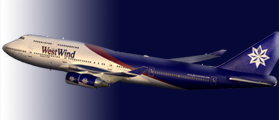

Advanced Pilot Programs - FS Techniques: What are those lights/What do they mean?
Approved By
John Condon - Chief Pilot & Chief Administrative Officer
Last Updated: March 14th 2006
PART 4: WHAT ARE THOSE LIGHTS / WHAT DO THEY MEAN?
You are flying along in a rental J-3; you have a battery-operated radio with the battery located under the pilot’s seat. It was fun to be alone in the airplane on a long final when the RADIO QUIT. You could either fish around under the seat while trying to keep the airplane upright, or just keep coming and let the tower figure out you were NORDO (If it is necessary for a flight to cross the airport prior to joining crosswind, this should be done at least 500 feet above circuit height, and descent to circuit height should be made in the upwind area of the active runway).
If the failure happened far enough out, the accepted practice would be to enter on a right 45 and rock your wings periodically. But you were not far out to do any wing rocking, but on the other hand, lets suppose you were transmit only and knew it going in. You made one transmission advising the tower of your predicament and location, then circled just above the class D airspace until they had time to sequence you in with those light signals. So the PUN to this story is: “ if you know what those lights are and you know what they mean, you will be able to thank the controller for the special handling”, you just might surprise the controller with you special knowledge of ATC Light Signals.
Traffic control: Traffic cop or ATC (Air Traffic Control), both deal with a service, and both are charged with the authority to promote the safe, orderly and expeditious flow of traffic. In either case before the lights came along drivers handled their intentions with hand signals. Pilots handled their intentions with signals such as wing tipping, or like one flyer who yelled from the cockpit of his plane to get attention.
ATC Light Signals
| Color and Type of Signal | For Aircraft on the Surface | For Aircraft in Flight |
|---|---|---|
| Steady Green | Cleared for takeoff | Cleared to land |
| Flashing Green | Cleared to taxi | Return for landing (to be followed by steady green at proper time) |
| Steady Red | Stop | Give way to other aircraft and continue circling |
| Flashing Red | Taxi clear of runway in use | Airport unsafe - do not land |
| Flashing White | Return to starting point on airport | N/A |
| Alternating Red and Green | Exercise extreme caution | Exercise extreme caution |
This segment of Advance FS Techniques deals with the use of A hand held directional light signaling device which emits a brilliant narrow beam of white, green, or red light as selected by the tower controller. The color and type of light transmitted can be used to approve or disapprove anticipated pilot actions where radio communication is not available. The light gun is used for controlling traffic operating in the vicinity of the airport and on the airport movement area. Signals by the tower controller in the case of lost radio communications. In case of the occurrence of an inoperable radio or lost communication with the tower, you must understand light gun signals that the tower will flash.
Here are 15 questions to test your knowledge; question 15 is a Bonus question. May the Lights be with You.
Here are the Answers:
1-C
2-B
3-C
4-A
5-D
6-C
7-B
8-A
9-B
10-A, B, C, D
11-A
12-C
13-C
14a-flashing red
14b-steady red
14c-steady red
14d-flashing red
14e-steady green alternating red and green
15-Charles August Lindbergh
Take care,
John Condon
Chief Administration Officer
Chief Pilot,
Head Of Training
NOT TO BE USED IN REAL WORLD FLIGHT. NO PARTS OF THIS ARTICLE MAY BE REPRINTED WITHOUT THE WRITTEN PERMISSION OF THE AUTHOR.